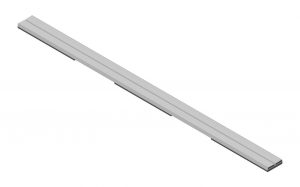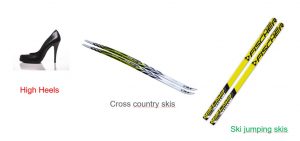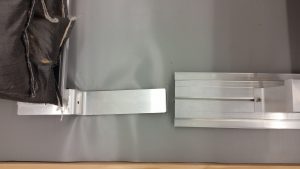
I will never forget my father´s face when my sister-in-law walked across his newly laid parquet flooring with spiked heels on …This funny example reminds me of, how “not so funny” and also how important sufficient area is for the distribution of relative loads. Because the same situation also applies to PV systems on flat roofs as in these situations, heavy loads can play a role, too. Either caused by snow loads, e.g. in Scandinavia or in the Alps, or by high ballasting weight. As a Certified Surveyor for Photovoltaic Systems, I see more and more cases where installers are confronted with building insurance claims for damaged roof coverings caused by heavy loads. In the case of a commercial sized roof, the resulting claims against the installer can easily get up to a six-digit number of value.
As you know, nowadays more and more buildings are covered with foil with a rather “foamy” layer of insulation underneath which can be easily be deformed by the weight of the PV system on top. Therefore, it is very important that the weight of PV system and extra loads such as snow are evenly distributed properly across the foil.
For a better visualization, let’s take a look at another comparison of available distribution areas that can be taken as an example High Heels, Cross country skies or Ski jumpi ng skies.
ng skies.
Obviously, the pressure per square centimeter is minimised when jumping skis are used due to their big area. IBC SOLAR is therefore implementing the exact same principle when it comes the design of the base rails for the AeroFix mounting structure. In this case, instead of punctual pressure points a resulting larger base area can be found.
In our Competence Center we have created a testing environment where we placed the same modules with identical loads onto a foil / insulation combination. Please note following picture:
 At the right side it can be seen that the wide base rail of the IBC AeroFix does not influence the shape of the roof foil at all. Contrary, on left side you can see a product with single legs instead of a continuous base rail. The resulting punctual pressure under the single leg is deforming the roof foil significantly. It is clear, that ruptures of the foil at the highly stressed points will develop in no time at all. It needs to be mentioned, that this example is performed with a load of only 2.400 Pa, a value that is easily exceeded in snowy regions.
At the right side it can be seen that the wide base rail of the IBC AeroFix does not influence the shape of the roof foil at all. Contrary, on left side you can see a product with single legs instead of a continuous base rail. The resulting punctual pressure under the single leg is deforming the roof foil significantly. It is clear, that ruptures of the foil at the highly stressed points will develop in no time at all. It needs to be mentioned, that this example is performed with a load of only 2.400 Pa, a value that is easily exceeded in snowy regions.
So, do you really want this to happen to your roof? Do you want to have the risk of high-valued insurance claims? In our opinion, it makes much more sense to invest in a proper mounting structure upfront, just to protect yourself in the future.
Of course there are applications, where either no heavy loads are appearing or the roof covering is very solid, e.g. concrete roofs. In this case the pressure issue is not that important and the design of our AeroFix base rails is “perfect”. As you know, the wide rail design comes along with a lot of aluminum used and therefore with a price tag. Due to this we have developed our new AeroFix base rail “ECO” which has been announced in this press release. This more cost-effective rail is the proper choice for mentioned non-critical applications.
Should you be not completely sure which type of mounting system is the right one for you to opt for please let us know: Our technicians are always happy to help!
Author: Dieter Miener (Technical Application Engineer)